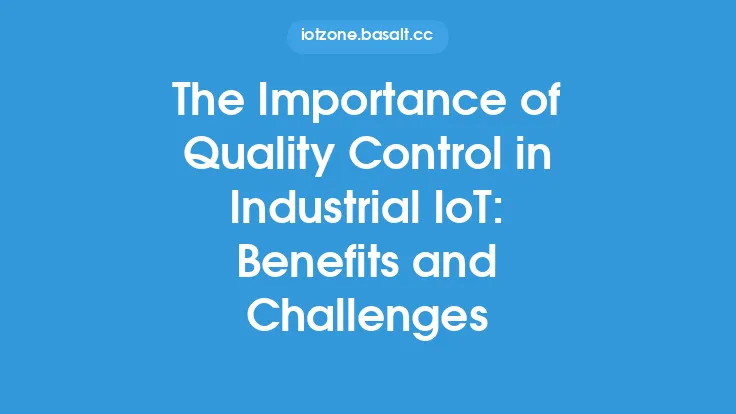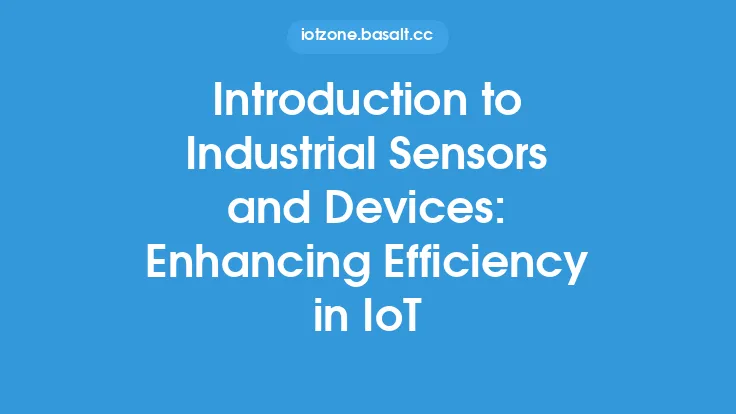The increasing demand for efficient and reliable industrial automation has led to the development of wireless industrial sensors. These sensors have revolutionized the way industries monitor and control their processes, offering numerous advantages over traditional wired sensors. Wireless industrial sensors use wireless communication protocols such as Wi-Fi, Bluetooth, or proprietary protocols to transmit data to a central location, eliminating the need for cables and wires.
Advantages of Wireless Industrial Sensors
Wireless industrial sensors offer several advantages, including increased flexibility, reduced installation costs, and improved safety. The absence of cables and wires reduces the risk of damage, wear, and tear, and minimizes the potential for electrical noise and interference. Additionally, wireless sensors can be easily relocated or reconfigured as needed, making them ideal for applications where equipment or processes are frequently changed or updated. Wireless industrial sensors also enable real-time monitoring and control, allowing for faster response times and improved decision-making.
Technical Overview of Wireless Industrial Sensors
Wireless industrial sensors typically consist of a sensing element, a microcontroller, and a wireless transceiver. The sensing element measures the physical parameter of interest, such as temperature, pressure, or vibration, and converts it into an electrical signal. The microcontroller processes the signal and transmits it to the wireless transceiver, which converts the signal into a wireless transmission. The transmission is then received by a central location, such as a gateway or a cloud-based server, where the data is processed and analyzed. Wireless industrial sensors can operate on a variety of frequencies, including 2.4 GHz, 5 GHz, and 868 MHz, and can use various communication protocols, such as Zigbee, Bluetooth Low Energy (BLE), and Wi-Fi.
Challenges and Limitations of Wireless Industrial Sensors
Despite the advantages of wireless industrial sensors, there are several challenges and limitations to consider. One of the primary challenges is ensuring reliable and secure wireless communication. Wireless signals can be affected by interference, multipath fading, and other environmental factors, which can impact data accuracy and reliability. Additionally, wireless industrial sensors require power to operate, which can be a challenge in applications where power is not readily available. Battery life can be a concern, and replacing or recharging batteries can be time-consuming and costly. Furthermore, wireless industrial sensors can be vulnerable to cyber threats, such as hacking and data breaches, which can compromise the security and integrity of the data.
Power Management and Energy Harvesting
Power management is a critical aspect of wireless industrial sensors, as they require a reliable and efficient power source to operate. Battery-powered sensors are commonly used, but they can have limited lifetimes and require frequent replacement or recharging. Energy harvesting technologies, such as solar, vibration, or thermal energy harvesting, can provide a reliable and sustainable power source for wireless industrial sensors. Energy harvesting technologies can reduce the need for battery replacement and minimize the environmental impact of wireless sensors.
Wireless Communication Protocols and Standards
Wireless industrial sensors use a variety of communication protocols and standards to transmit data. These protocols and standards include Wi-Fi, Bluetooth, Zigbee, and proprietary protocols. Each protocol has its own advantages and disadvantages, and the choice of protocol depends on the specific application and requirements. Wi-Fi, for example, offers high data rates and long-range communication, but can be power-hungry and vulnerable to interference. Bluetooth, on the other hand, offers low power consumption and short-range communication, making it suitable for applications where power is limited.
Security Considerations for Wireless Industrial Sensors
Wireless industrial sensors can be vulnerable to cyber threats, such as hacking and data breaches, which can compromise the security and integrity of the data. To mitigate these risks, wireless industrial sensors should be designed with security in mind, using techniques such as encryption, authentication, and secure communication protocols. Additionally, wireless industrial sensors should be regularly updated and patched to ensure that any known vulnerabilities are addressed. Network segmentation and isolation can also help to prevent unauthorized access to the sensor network.
Real-World Applications of Wireless Industrial Sensors
Wireless industrial sensors have a wide range of applications in various industries, including manufacturing, oil and gas, and transportation. In manufacturing, wireless sensors can be used to monitor equipment condition, track inventory, and optimize production processes. In oil and gas, wireless sensors can be used to monitor pipeline condition, detect leaks, and optimize drilling operations. In transportation, wireless sensors can be used to monitor vehicle condition, track cargo, and optimize logistics operations. Wireless industrial sensors can also be used in smart cities, where they can be used to monitor traffic, air quality, and energy usage.
Future Developments and Trends
The future of wireless industrial sensors looks promising, with advancements in technology and innovations in applications. The increasing adoption of Industrial Internet of Things (IIoT) and Industry 4.0 technologies is driving the demand for wireless industrial sensors. The development of new wireless communication protocols, such as 5G and LoRaWAN, is also expected to improve the performance and reliability of wireless industrial sensors. Additionally, the integration of artificial intelligence (AI) and machine learning (ML) algorithms with wireless industrial sensors is expected to enable real-time analytics and predictive maintenance, further improving the efficiency and productivity of industrial operations.





